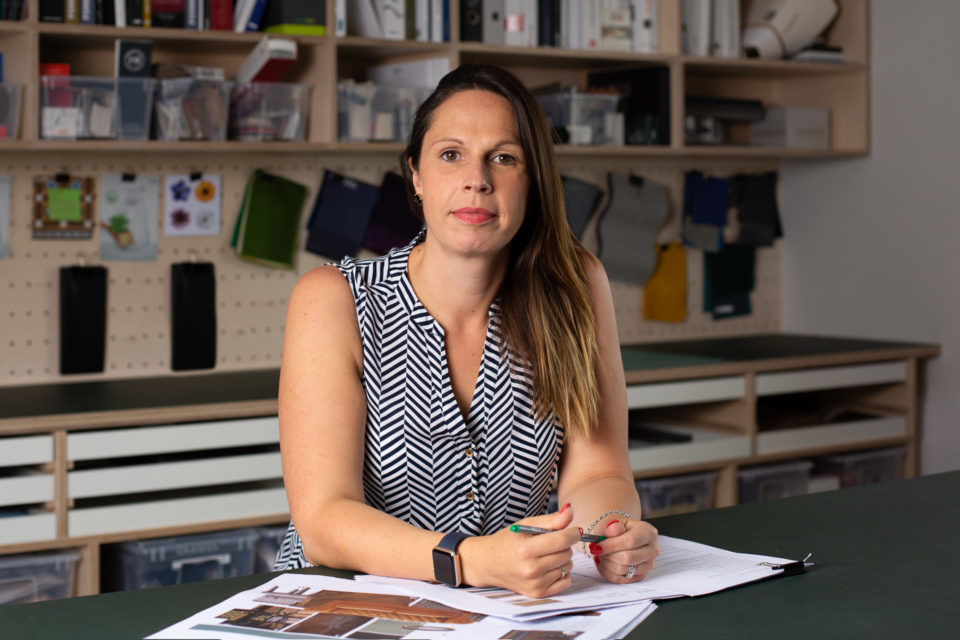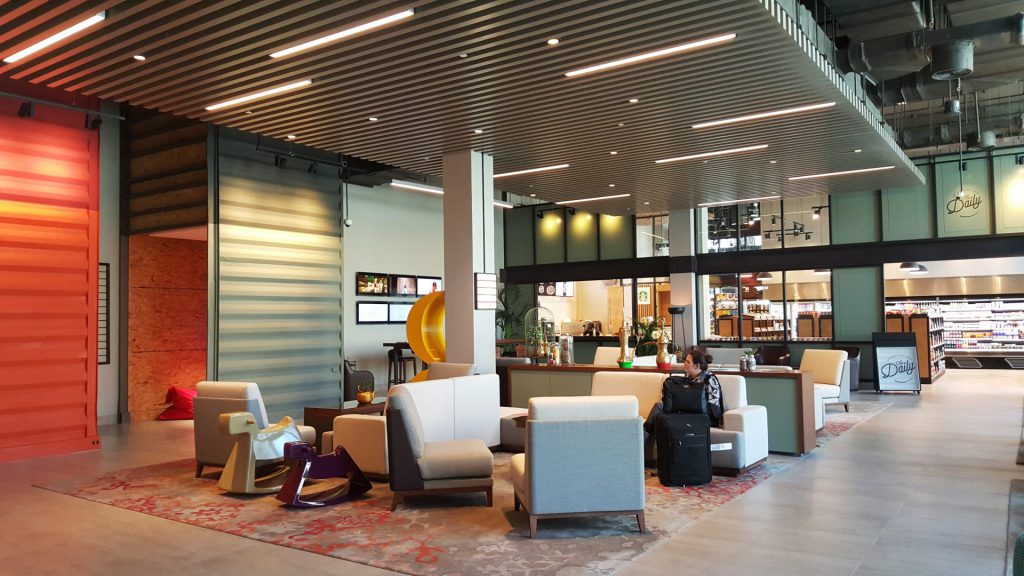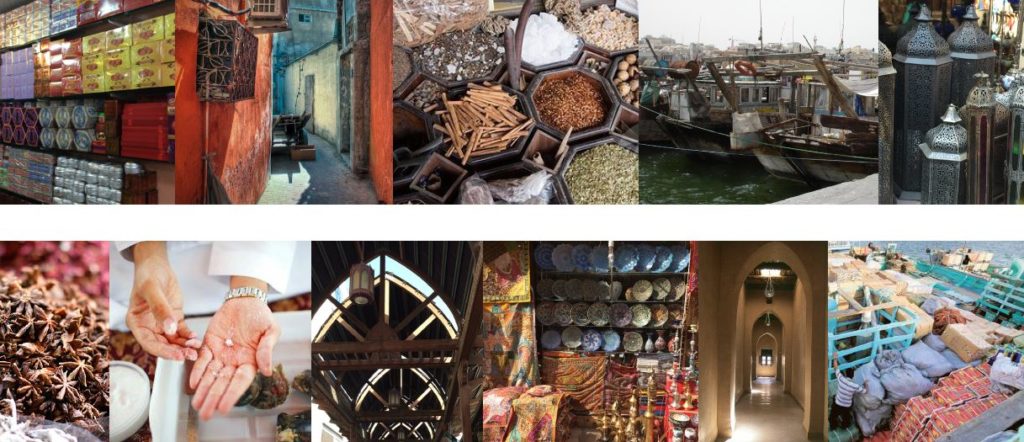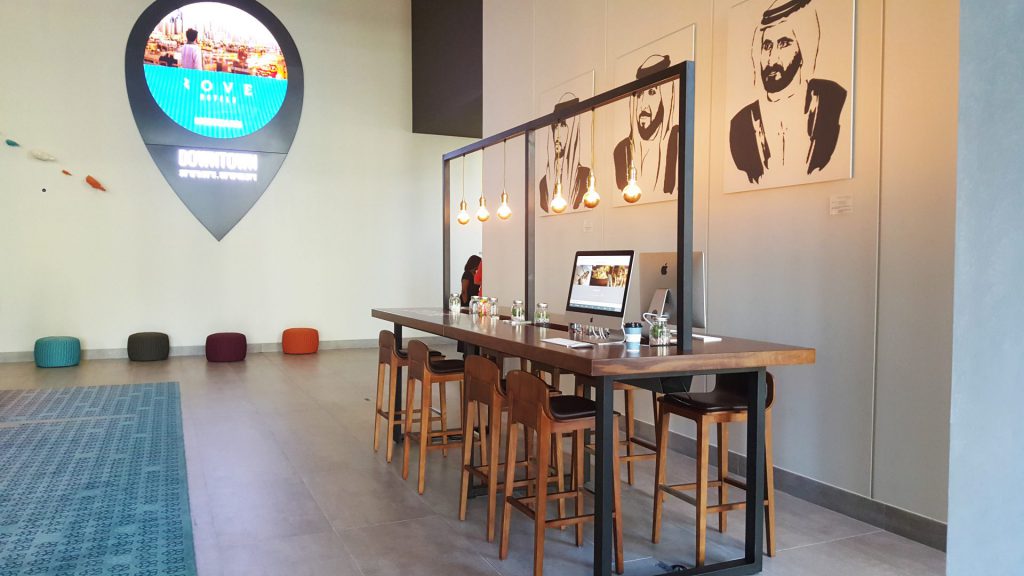Rove Hotels is up for two awards at AHEAD Global next week. We spoke to Anabel Oreiro, Head of Interior Design, to dig a little deeper into the design process and find out if this global recognition has made all those late nights worth it.

So, Rove Hotels is up for two global AHEAD awards; Event Space and New Concept of the Year. Is this what Interior Designers dream about?
It really is. Designing hotels is my true passion and the fact that all the hard work is now being recognised is a real honour. Winning awards is the icing on the cake for any project. Often you’re so busy that you rarely have time to recognise the significance of what you’re doing until after it’s completed.
You call it a ‘new breed of millennial hotel’, was that label in place from the start of the design process?
The original brief was simply to design and deliver an affordable hotel offer, ahead of Expo 2020. Dubai is full of 4, 5, 6 and even 7* hotels of the highest quality and the UAE tourism board identified a need for more affordable rooms in the city. Our client, Emaar Hospitality wanted to create something new within this market.
It was only through the design process that we drilled down into what the Rove Hotel user was looking for that other brands didn’t provide. There were lots of conversations centred on the modern traveller, millennials and the rise of platforms such as Instagram and Pinterest.

Tell us about the project team.
Rove was an evolving project that was continually reinventing itself. We had to be agile and responsive to its demands. We had an experienced team that had been involved in the development of the Hoxton brand, so we knew what the process required.
As experts in hotels and leaders in development of the region, the client was made up of fantastic individuals that continually challenged us to do more. Anne Cecile Du-Chamont was our main point of contact through the development phase and worked very closely with us to ensure we maintained the design standard and revisited the brand message throughout.
So there was a strong sense of collaboration in bringing this concept to life?
It was absolutely a team effort. When we won the project we relocated the Stride Treglown team to Dubai to be closer to our client. We wanted to be more responsive and work collaboratively with them at every step.
Creating a new and unique brand within the hotel sector required a huge commitment from all parties involved: the client team, branding consultants, visualizers, FF&E suppliers and the lead architects. As the project progressed, we worked on six sites simultaneously – needless to say we spent a lot of time together.

There’s a visual mix of references to an everyday Dubai culture; graffiti, artefacts, graphics are used throughout – tell us more about these details.
The artwork brief was largely centred on the need to provide a sense of place and identity within the city. In Dubai it’s very easy to get in a taxi at the airport and go to your hotel without a second thought about the area you are in. The public realm is not prioritised in Dubai, mainly due to the extreme heat during the summer months. This makes art installations more pivotal in providing you with a location’s sense of place.
Would you say it was less about just shunning marble and gold, and more about embracing a sense of place?
Yes, exactly. We tapped into the history of the region and hotel locations. We applied a modern interpretation on those elements in our finishes and beyond into dressing of the space.
The Dubai culture clash of ‘Arabic heritage’ and ‘urban edge’ was pivotal in the design of public spaces. We tried to achieve a balance between the two forces; forward looking but respectful of the past. The former is warmer and rich in heritage elements, patterns and textures. The latter is more monochromatic and contemporary in its treatment of fabrics and finishes.

And, tell us about the hashtags.
We started this project 5 years ago, at which point Instagram was creating a real challenge for the design community. At every meeting there would be a raft of new images and ideas shared by the client team and the same question tabled ‘is this Instagramable?’
So the hashtags were really client led, born out of the desire to create ‘Instagrammable’ elements within their properties.
The quest for the ‘instagrammable’ seems to be a key ingredient for interiors, and not just in hotels?
Instagram now forms a very fundamental part of designing interior spaces, from sourcing inspiration to providing a litmus test for success of a scheme. And this is not only relevant to hotels but to every sector. We’ve been working closely with Fusion Students on developing their brand of student accommodation which breaks the norm. Their communal areas are more akin to hotel and workplace provision. In a similar way to how the millennial traveller has influenced our design of Rove Hotels, ‘generation alpha’ is dictating how we design our student accommodation and education provision.

Rove has been recognised for its event space. Can you tell me more about the design of these spaces?
It all started with an image of some red industrial doors and a desire to provide a flexible space with a casual feel. Something a bit different to other more traditional hotel meeting or event spaces.
Interior Designer, Bethan Hellings considered Rove’s target demographic; the people using these spaces may be of a younger, more connected age. The rooms are totally flexible and able to host anything from small gatherings to large company meet-ups. Doors slide and fold to create welcoming, open spaces.
We wanted to encourage interaction and chance encounters between people travelling from all over the world. It was really important to design a comfortable, fun and relaxed space to make people feel comfortable, fun and relaxed. Nobody likes an event where everyone is nervous, uptight and unable to plug in their devices!
Every designer finishes a project with a key bit of learning – what was your take away?
There was a lot to take away from this project. Don’t wear heels to ‘standing’ meetings – these were always intended to be short 20 minute sessions that typically turned into 3 or 4 hours plus!
But on a serious note, the long lasting learning has to be two stand out factors. Firstly, embracing Instagram as our tool and using it to fuel our design development. Secondly, the power of the white card model. We work solely in Revit 3D now and provide visuals at every stage of the design process.
The results of AHEAD Global will be announced on 28th January 2019.